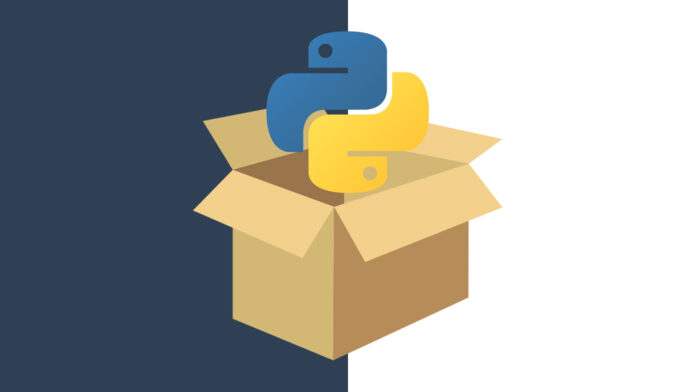For ordinary computer users, PIP might not hold much significance. However, regular python users would know the value of the PIP package system. Well, the PIP command acts as a package management tool that manages and installs the software packages. Every time a user installs a python application, it’s better to use PIP than other unreliable tools. PIP needs to function properly to manage those python packages so timely upgradation to the latest version is extremely necessary. Check out how to upgrade the PIP package to the latest version for Windows, Mac OS, and Linux operating systems.
How to install PIP and Check the PIP Version?
If you are a complete beginner then everything might appear confusing to you. So, to begin with, here’s how you can install pip for Windows, Linux, or macOS.
Step 1. To install pip or python visit their official site https://www.python.org/ and install the latest python version.
Those who use Linux, install python from the terminal using the Sudo access.
Step 2. To check the current version for Windows, macOS, or Linux, run the command in the command prompt or terminal respectively.
pip3 version - - version or
pip - - versionFor windows, the output will appear from (c:\users\administrator\appdata\local\programs\python\python37\lib\site-package\pip)
Step 3. Pip manages the python packages. To know about the syntax and other details type in in the command prompt-
pip3 help or
pip helpAlso Read: How to Install Python pip on Ubuntu 22.04
How to Update PIP in Windows
While operating Windows’s latest version on your PC, you can easily update to the current version of the PIP. However,
Prerequisites
For upgrading PIP’s latest version make sure that you haven’t added Python to Windows Path. Stay with us to know in detail. Once you tap into your Windows Command Prompt, you have to type in the below-mentioned commands.
Step 1. Navigate to the Windows Search box and type in Command Prompt.
Step 2. Open the command prompt with your user name at the top. You can also consider the role of administrator while running the command prompt. It will be similar to C:\Users\Ron>
Step 3. Add cd\ (C:\Users\Ron>cd) which will register only the drive name as a starting point.
Step 4. Press enter (The driver name will appear as such – “C:>“)
Step 5. Now it’s time to retrieve the original folder where you have installed python, the Python application path. Example: C:\Users\Ron\AppData\Local\Programs\Python
Step 6. After locating the python application path, add cd in the command prompt followed by your application path. Once done press enter. Example- C:>cd
C:\Users\Ron\AppData\Local\Programs\Python
Step 7. For upgrading to the latest version, all you have to do is type out the below command
Python -m pip install - - upgrade pip(after your application path). Example- C:\Users\Ron\AppData\Local\Programs\Python>Python -m pip install – – upgrade pip
Once you follow the above steps, a prompt on the display screen will notify you that the latest version of PIP has been successfully installed. The current PIP package’s latest version is 22.3.1.
How to Update PIP in macOS and Linux?
Updating PIP for both Linux and Mac OS is pretty much similar. So, we will begin with the Linux PIP package upgrade.
Step 1. You should begin by checking the present version of PIP. So, for that in the command prompt type – $pip – – version. Press enter and you would get accustomed to the present PIP version.
Step 2. After knowing the present version, if you made up your mind on updating the version then use the pip install upgrade command from the terminal. Press enter. The command will be as such-
$ pip install - - upgrade pip or $ pip install -U pipStep 3. (optional) Many may find permission issues while upgrading the pip. So, in such cases, use the sudo command if you are aware of the root password. It looks like this –
$ sudo -H pip3 install - - upgrade pipBy following the above steps the latest version of pip will get instantly installed on your Linux Operating system.
For Mac OS users, the steps including the commands are quite similar. That is:
$ pip install - - upgrade pipHowever, if you receive an error message like pip command not found, here’s an alternative-
$ python -m pip install - - upgrade pip
(Those with pip3 alias can try out the following command: $ pip3 install – – upgrade pip )
Other Ways
With Anaconda Distributor, You can also update the pip using Anaconda or by following manual upgradation. You can do so with Anaconda distribution by following the two simple steps-
Step 1. Open the anaconda command prompt and start entering.
Step 2. Enter the following- C:\Users\sai>conda update pip
Else you can also update the pip package manually by visiting the website https://pypi.python.org/pypi/pip. There download the tar file and use the URL of the package and wget command for downloading.
Coming to The End!
Upgrading the pip package to the latest version would indeed benefit you in many ways. But if you still like the older version then there’s always a way to downgrade the present pip version. All you have to do is enter the command: python -m pip install pip ==18.1 ( or the previous version you want to downgrade) in the command prompt.
